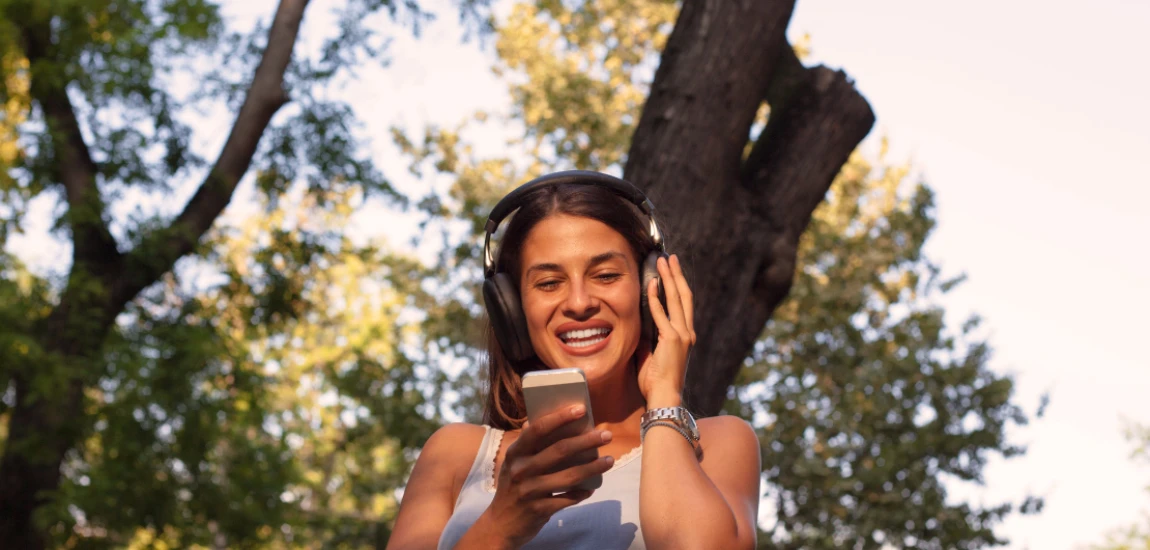The Soundtrack of Virality: How Music Drives Internet Trends

Music has always been a cultural glue, a universal language that connects people across borders and generations. But in the age of social media, music isn’t just something we listen to—it’s something that moves trends, creates memes, and defines the pace of online culture. From TikTok dance challenges to Instagram reels and viral YouTube mashups, music is no longer just background noise; it’s the heartbeat of internet virality. This blog explores how music drives internet trends, why certain sounds explode online, and how creators, brands, and artists can harness this phenomenon to shape digital culture.
The Psychology of Music in Virality

Music’s role in virality starts with human psychology. People don’t just consume music; they feel it. When a track or a sound bite gets linked to a trend, it taps into deep emotional and cognitive responses that make content stick.
Emotional Connection and Memory
Songs often trigger nostalgia, happiness, or shared cultural experiences. A 10-second sound clip can remind someone of a childhood memory or a specific moment in pop culture. This emotional resonance makes users more likely to engage with content, repeat the trend, and share it further, fueling its viral spread.
Repetition and Catchiness
The brain is wired to respond to repetition. That’s why catchy hooks, loops, and beats dominate platforms like TikTok. Short, repetitive snippets of songs are easier to remember and reproduce, making them perfect for meme formats, dance challenges, and remixes.
Mimicry and Social Belonging
Humans naturally mimic behaviors to feel part of a group. When a viral dance or lip-sync challenge is paired with a recognizable sound, people feel compelled to join in, recreating the trend as a form of digital belonging. Music acts as the glue that unites these viral communities.
TikTok, Reels, and the Rise of Sound-Centric Platforms

If music is the fuel, platforms like TikTok and Instagram Reels are the engines of viral culture. These apps have transformed how people discover music and how artists gain exposure.
The TikTok Effect on Music Charts
TikTok has become one of the biggest drivers of Billboard hits. Songs that trend on the app often skyrocket to the top of charts, even if they were released years ago. Lil Nas X’s “Old Town Road” and Kate Bush’s “Running Up That Hill” are prime examples of how social media virality translates into mainstream success.
Algorithmic Boost of Sounds
Platforms prioritize sounds with high engagement. Once a snippet gains traction, algorithms push it into more feeds, encouraging mass participation. The more creators use the same sound, the higher its visibility, creating a snowball effect that can’t be ignored by musicians and marketers alike.
Music as Content Currency
On these platforms, sounds are like digital currency. They provide context, emotion, and a shared foundation for trends. A single track can power dance challenges, comedy skits, tutorials, and even activism posts, showing the versatility of music in shaping digital conversations.
How Music Creates Viral Challenges and Memes

Behind every viral challenge, there’s usually a sound that acts as its backbone. Whether it’s a high-energy beat that inspires choreography or a comedic sound clip that fuels parody videos, music often dictates the form a trend will take.
Dance Challenges and Rhythmic Appeal
The rhythmic nature of music makes it perfect for choreographed routines. A beat drop or chorus cue provides a natural hook for creators to build visual content around. This explains why songs with strong rhythms often go viral as dance challenges.
Memes and Remix Culture
Beyond dance, music drives meme culture. Creators remix popular songs, slow them down, speed them up, or mash them with unexpected clips. These alterations make familiar sounds feel fresh, sparking new waves of creativity while keeping the original sound relevant.
Humor, Irony, and Soundbites
Sometimes, it’s not the whole song but a quirky lyric or sound effect that goes viral. These snippets are repurposed into jokes, reaction videos, and ironic memes, proving that music’s role in virality doesn’t always depend on the track itself—it’s about how users reinterpret it.
Music Marketing and Brand Engagement

Brands have quickly realized that to stay relevant online, they need to ride the wave of music-driven trends. When done right, music-powered marketing doesn’t just increase visibility—it creates cultural relevance.
Brands Leveraging Viral Sounds
From fast-food chains to fashion labels, brands are adopting viral sounds to connect with younger audiences. By aligning campaigns with trending music, they insert themselves into digital conversations without feeling intrusive.
Original Brand Anthems
Some companies are taking it further by creating their own branded soundtracks. These jingles or remixes are designed for easy participation, inviting consumers to make user-generated content around them. This transforms audiences from passive viewers into active brand ambassadors.
Influencer Collaborations and Artist Partnerships
Brands often partner with influencers or musicians to amplify music-driven campaigns. By leveraging influencers who already use viral sounds, brands can authentically embed themselves into trends without forcing their way in.
The Artist’s Perspective: Music Discovery in the Digital Age

For musicians, the rise of sound-centric platforms has been both a challenge and a golden opportunity. Artists are no longer solely reliant on radio play or record labels—virality can happen from a bedroom studio.
Breakthroughs Through Virality
Unknown artists have exploded overnight thanks to TikTok or YouTube. For example, Doja Cat’s early hit “Mooo!” gained massive attention due to its quirky virality, propelling her into mainstream success. This democratization of music discovery has redefined the industry.
Challenges of the 15-Second Fame
However, virality can be a double-edged sword. Many artists struggle to sustain success beyond the single viral hit. Audiences may remember the sound but not the artist, making long-term brand building more difficult.
New Pathways for Exposure
Still, platforms provide invaluable exposure for independent musicians. From snippets of unreleased tracks to acoustic versions, artists can test their material in real time. If a sound resonates, it can gain traction before an official release, ensuring built-in demand.
The Future of Music-Driven Virality

As technology evolves, the relationship between music and internet trends is only getting stronger. From AI-generated sounds to immersive digital experiences, the next wave of virality is already on the horizon.
AI and Custom Soundtracks
Artificial intelligence is making it easier than ever to create catchy tunes. These AI-generated tracks may soon be tailored for virality, designed with the right tempo, beats, and loops to thrive on social platforms.
Virtual Concerts and Metaverse Trends
The rise of virtual concerts in spaces like Fortnite and Roblox shows how music can integrate with interactive platforms. These digital events generate viral moments that spread across multiple platforms, extending their cultural footprint.
The Evolution of “Sound Memes”
Future virality may lean more heavily on micro-sounds—tiny audio cues, phrases, or effects that spread faster than full songs. These “sound memes” could redefine how users engage with music, emphasizing brevity and remixability even more.




